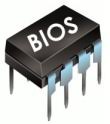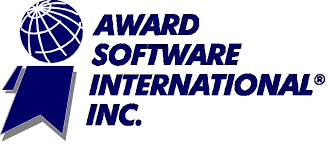Office Genuine Advantage (OGA) is another initiative by Microsoft to stem the piracy and counterfeit copy of Microsoft Office business producitivity suite and applications. Since April 15, 2008,Office Genuine Advantage (OGA) Notifications was pushed to client computers installed with Microsoft Office XP, Office 2003 or Office 2007 as “Important” or “Needed” update, and is not removable or uninstallable after installed.
After installed, OGA validation component will perform a check on install Office software, and OGA Notifications notifier component will display various “This copy of Microsoft Office is not genuine” message if the Office software is determined as not genuine or not legitimate.
After installed, OGA validation component will perform a check on install Office software, and OGA Notifications notifier component will display various “This copy of Microsoft Office is not genuine” message if the Office software is determined as not genuine or not legitimate.
Although officially Microsoft prevents and disallows end-users from removing OGA Notifications (KB949810), there are several workarounds or hacks to remove Office Genuine Advantage Notifications. In fact, as it’s a MSI (Windows Installer) package which installed the OGA, the KB949810 OGA update can be removed and completely uninstalled properly and completely by using MSI uninstall string.
How to Uninstall Office Genuine Advantage Notifications (KB949810)
Open an command prompt window with elevated privileges.
Depending on the version of OGA (Office Genuine Advantage) installed (can be view from properties of %SystemDrive%\Windows\System32\OGAAddin.dll or DEL %SystemDrive%\Windows\System32\OGACheckControl.dll), run following commands below (see Tip below if you only want to run one command):
MsiExec /X {049F2E8F-D5EC-4133-87FA-8E94837D8D0C} /QN /NORESTART ALLUSERS=1
MsiExec /X {B148AB4B-C8FA-474B-B981-F2943C5B5BCD} /QN /NORESTART ALLUSERS=1
MsiExec /X {DB427EF6-F13E-4AA6-9D40-5D962394774F} /QN /NORESTART ALLUSERS=1
MsiExec /X {B2544A03-10D0-4E5E-BA69-0362FFC20D18} /QN /NORESTART ALLUSERS=1
MsiExec /X {B148AB4B-C8FA-474B-B981-F2943C5B5BCD} /QN /NORESTART ALLUSERS=1
MsiExec /X {DB427EF6-F13E-4AA6-9D40-5D962394774F} /QN /NORESTART ALLUSERS=1
MsiExec /X {B2544A03-10D0-4E5E-BA69-0362FFC20D18} /QN /NORESTART ALLUSERS=1
Note that the GUID identifier for OGA application may vary from system to system, depending on version and language installed. Generally, it works for OGA v1.7.0102.0, OGA v1.7.0105.35.0 and OGA v1.7.0105.35.0 v2.0.48.0.
Tip: To determine which is the exact application ID for Office Genuine Advantage installed on your system, run registry Editor (RegEdit), and navigate to the following registry key:
HKEY_LOCAL_MACHINE\SOFTWARE\Microsoft\Windows\CurentVersion\Uninstall
There are many registry sub-keys that resembles the product ID above. Go into each and everyone of the registry sub-branches to look for and locate DisplayName REG_SZ value data which matches or similar toOffice Genuine Advantage or OGA.
After uninstalling OGA properly, it’s wise to clean up and remove all trace of OGA from the system. Run the following commands to delete all registry entries and system files, if still present:
REG DELETE HKEY_LOCAL_MACHINE\SOFTWARE\Microsoft\Office\Word\Addins\OGAAddin.Connect /f
REG DELETE HKEY_LOCAL_MACHINE\SOFTWARE\Microsoft\Office\Excel\Addins\OGAAddin.Connect /f
REG DELETE HKEY_LOCAL_MACHINE\SOFTWARE\Microsoft\Office\Powerpoint\Addins\OGAAddin.Connect /f
REG DELETE HKEY_LOCAL_MACHINE\SOFTWARE\Microsoft\Office\Outlook\Addins\OGAAddin.Connect /f
DEL %SystemDrive%\Windows\System32\OGAVerify.exe
DEL %SystemDrive%\Windows\System32\OGAEXEC.exe
DEL %SystemDrive%\Windows\System32\OGAAddin.dll
DEL %SystemDrive%\Windows\System32\OGACheckControl.dll
REG DELETE HKEY_LOCAL_MACHINE\SOFTWARE\Microsoft\Office\Excel\Addins\OGAAddin.Connect /f
REG DELETE HKEY_LOCAL_MACHINE\SOFTWARE\Microsoft\Office\Powerpoint\Addins\OGAAddin.Connect /f
REG DELETE HKEY_LOCAL_MACHINE\SOFTWARE\Microsoft\Office\Outlook\Addins\OGAAddin.Connect /f
DEL %SystemDrive%\Windows\System32\OGAVerify.exe
DEL %SystemDrive%\Windows\System32\OGAEXEC.exe
DEL %SystemDrive%\Windows\System32\OGAAddin.dll
DEL %SystemDrive%\Windows\System32\OGACheckControl.dll
User who want an automated solution to remove Office Genuine Advantage can download the OGA Uninstaller, a batch script that automatically run all of above commands.
Download this batch file



